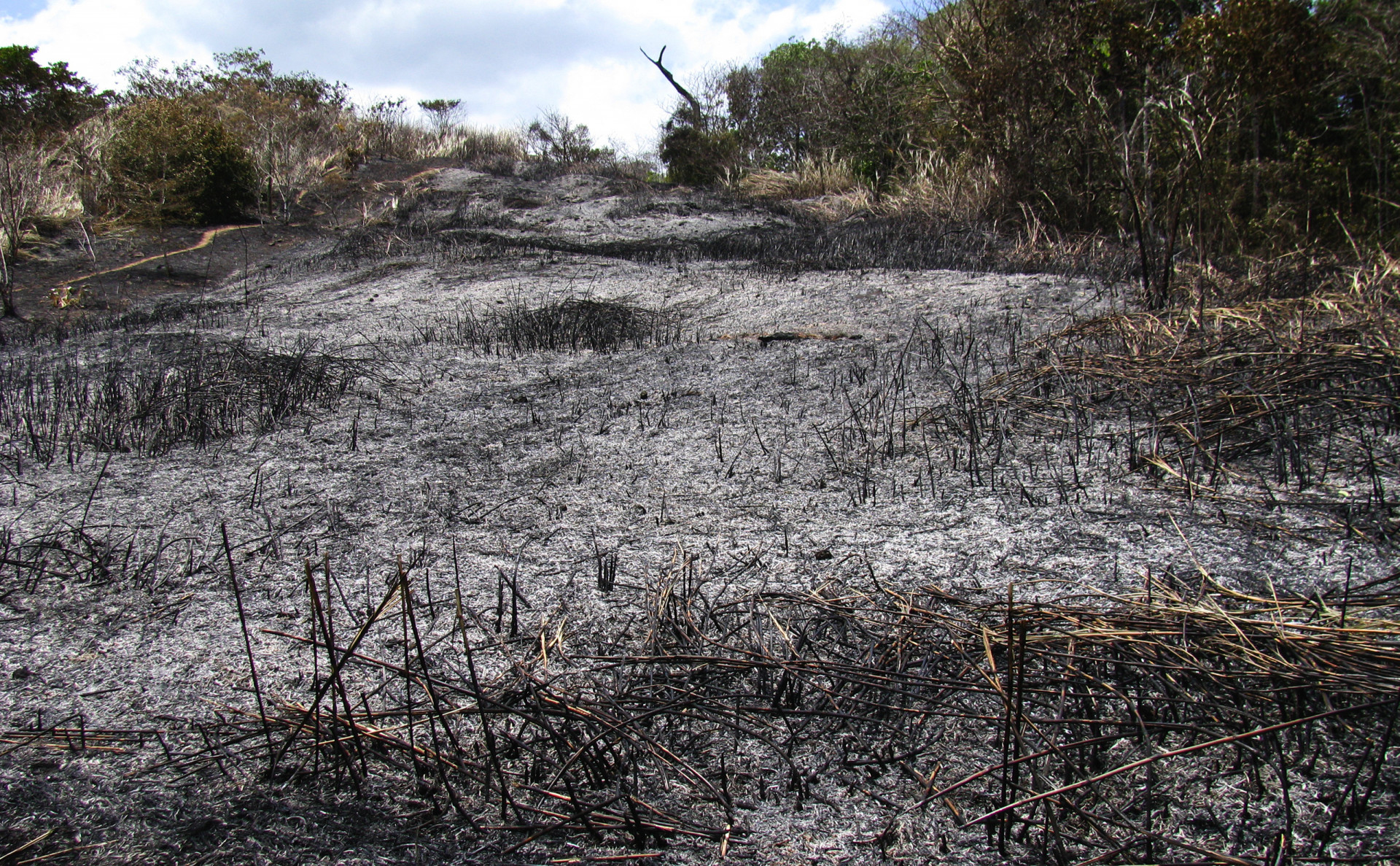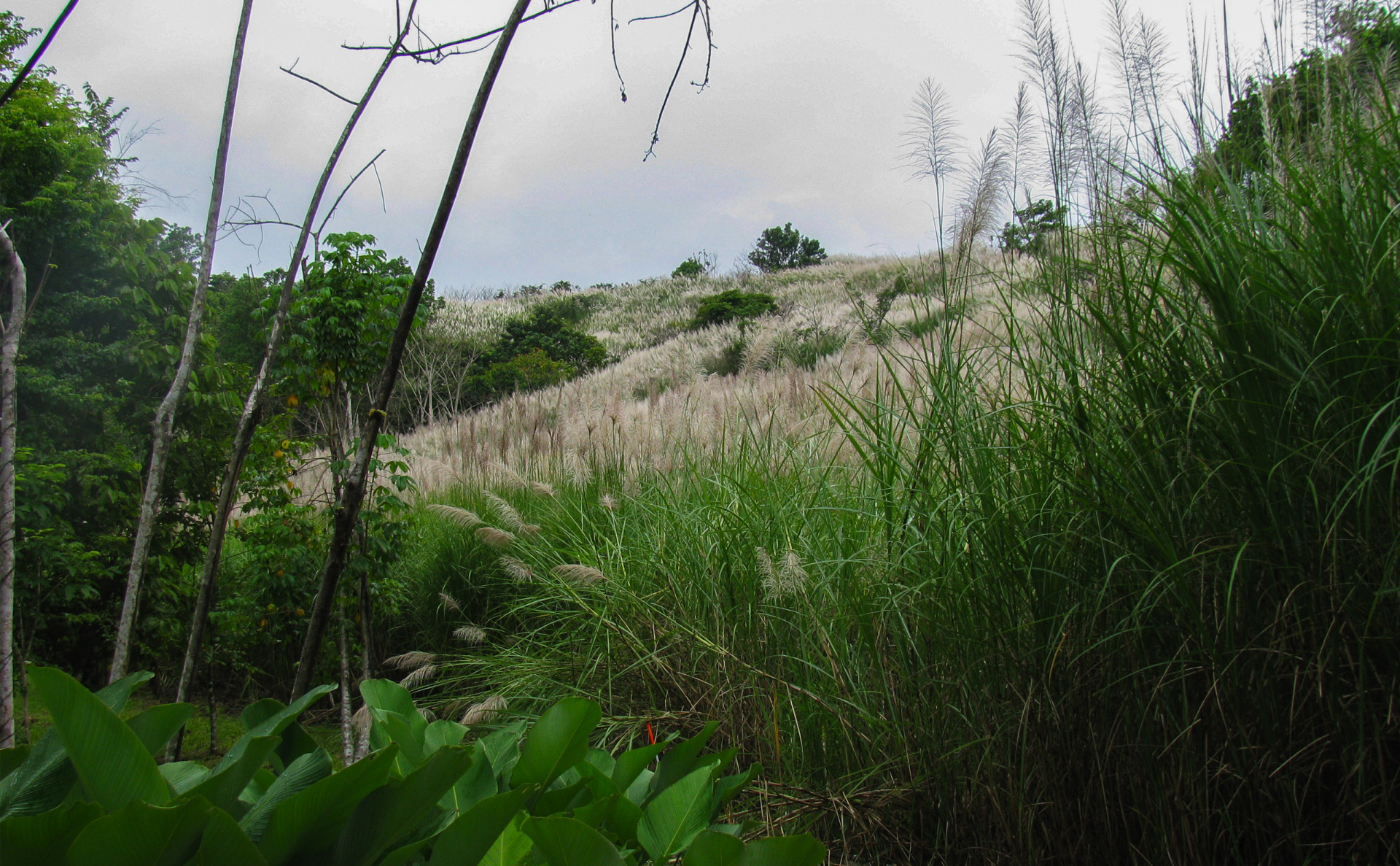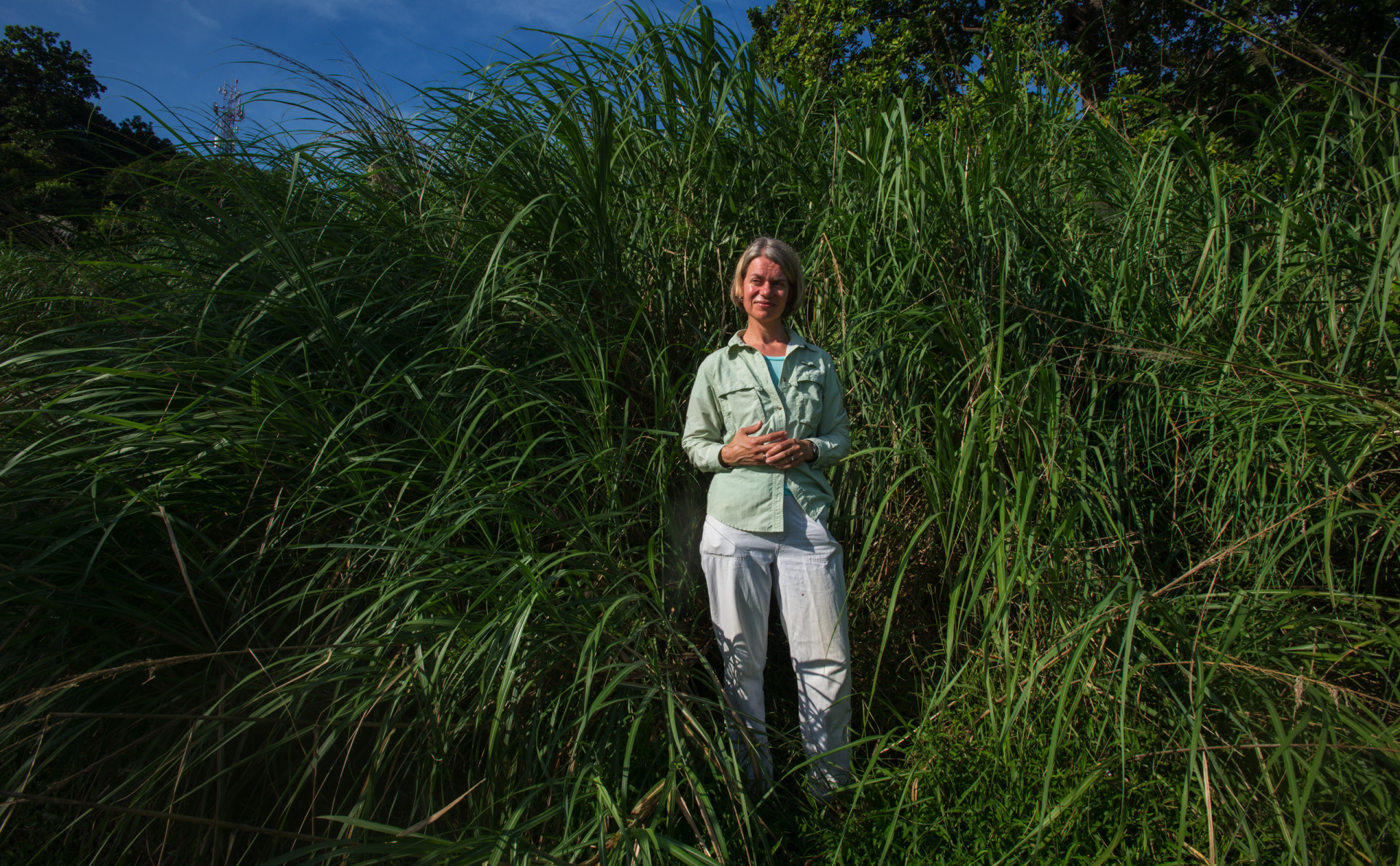Profile: Kristin Saltonstall
Fire fuels invasive grass
Soberanía National Park, Panama
Panama’s infamous canal grass rises from the ashes of fire much faster than trees, complicating reforestation efforts.
When fire ripped through invasive grass in Panama’s Soberania National Park in 2009, the hardy sugar cane-like plant quickly reemerged from the ashes. Within eight days, sprouts poked from the blackened ground. Six months later, the resilient weed had recovered as if it had never burned. Saccharum spontaneum is aptly named.
This Asian grass was likely introduced to Panama in the first half of the last century and quickly established in large areas of abandoned agricultural land in the Canal Zone. It has since spread throughout central Panama and is a bane of biodiversity, foresters and suburban park maintenance crews. New research suggests fire only makes it stronger.
“Saccharum responds positively and quickly to fire,” Smithsonian associate scientist Kristin Saltonstall wrote in Biological Invasions. Saltonstall showed that fire stimulates new growth and likely enhances reproduction of the weed, known locally as canal grass. It also creates a cycle of fire that threatens forests, which struggle to regrow when the suffocating grass is present.
Saltonstall theorizes that secondary forest growth could eventually rise above canal grass, but only in the absence of fire. It’s a tall order. Foresters must aggressively clear Saccharum to manually reestablish forest and the frequency of anthropogenic fire in Panama’s dry season shows little sign of decreasing.



